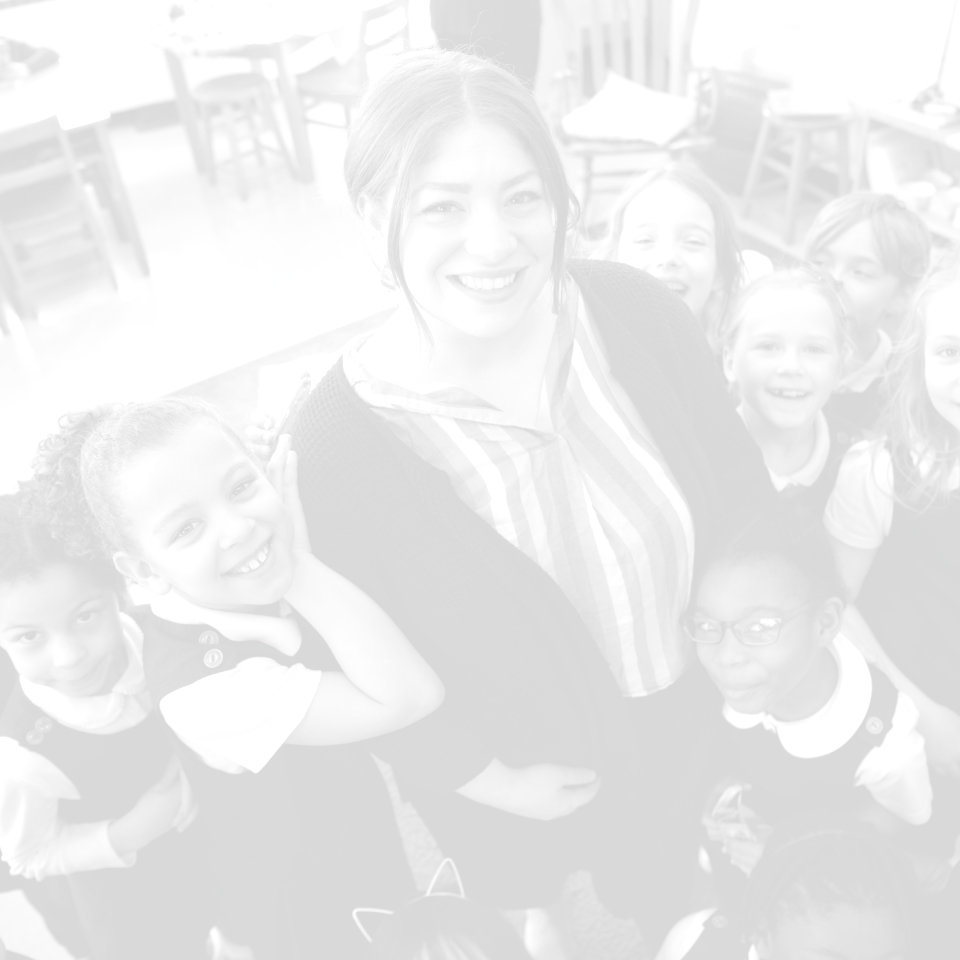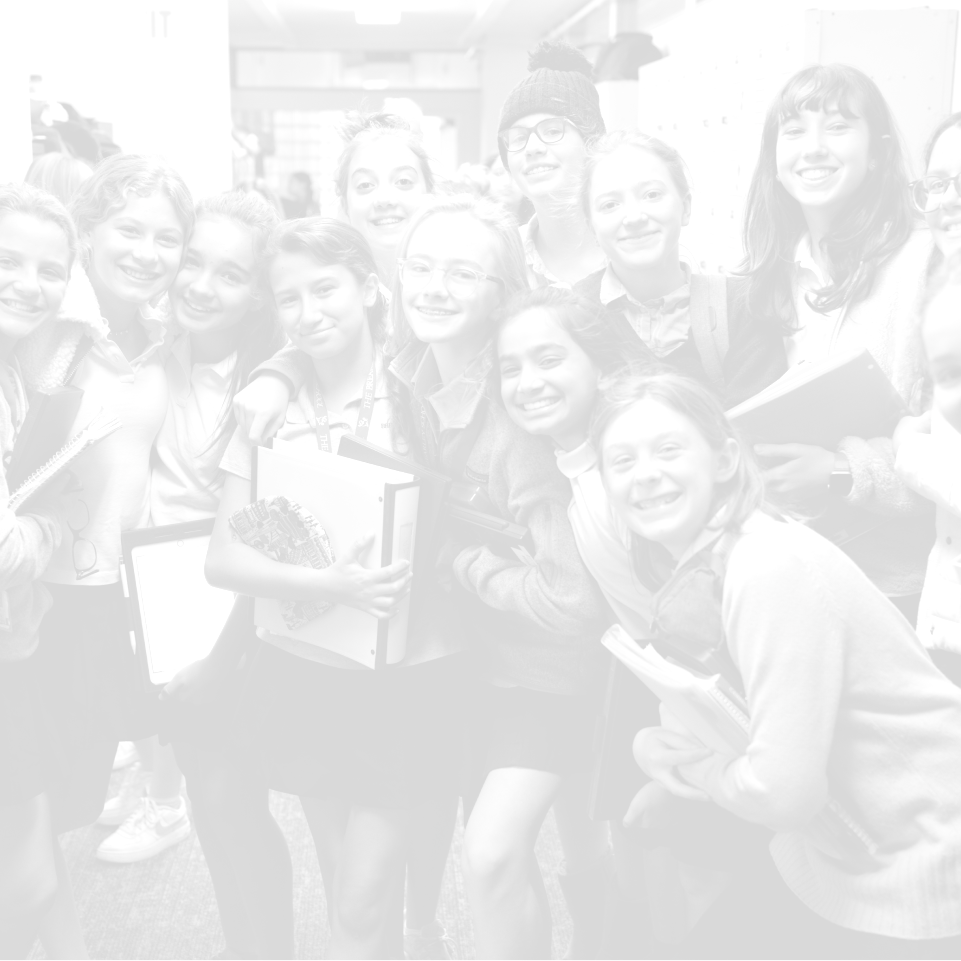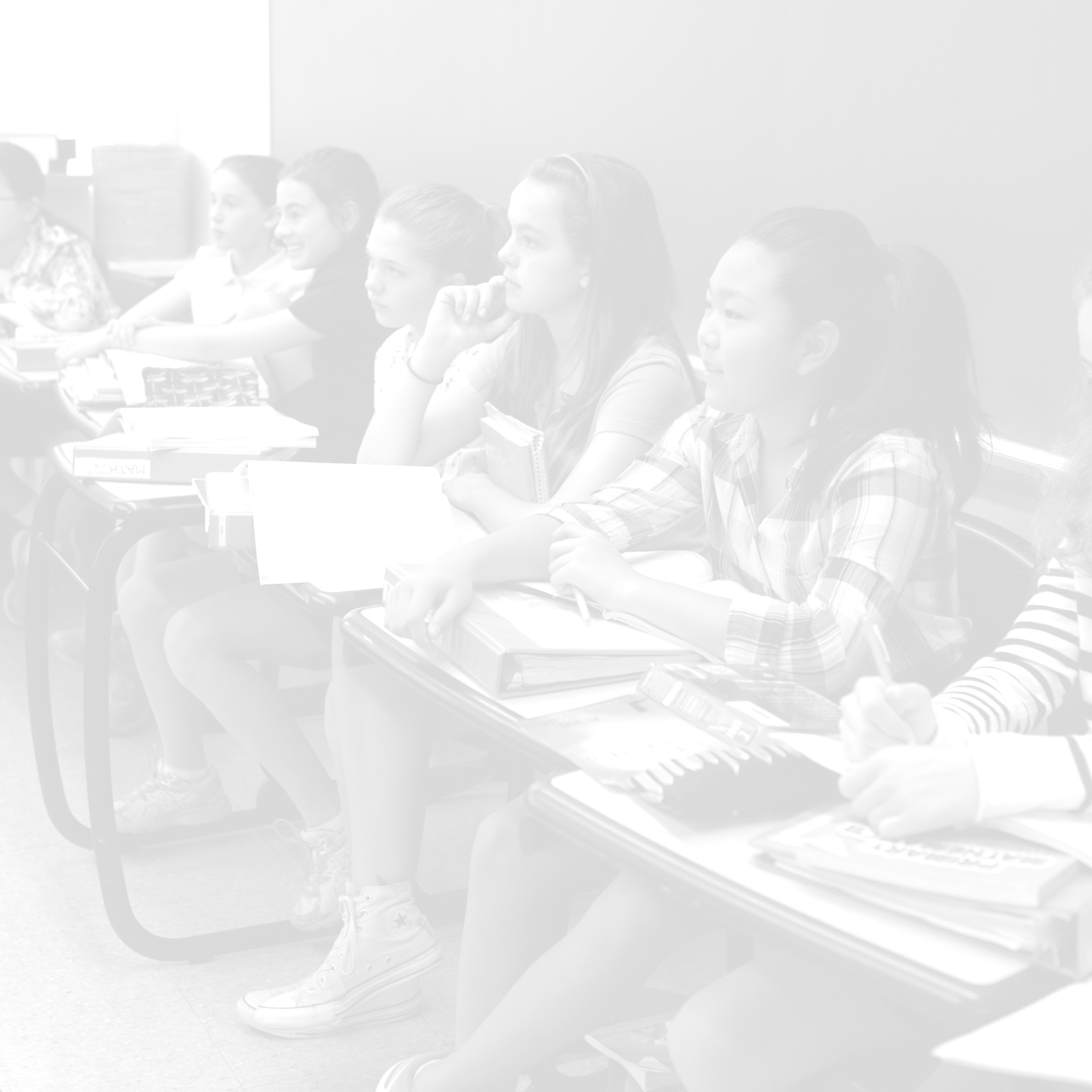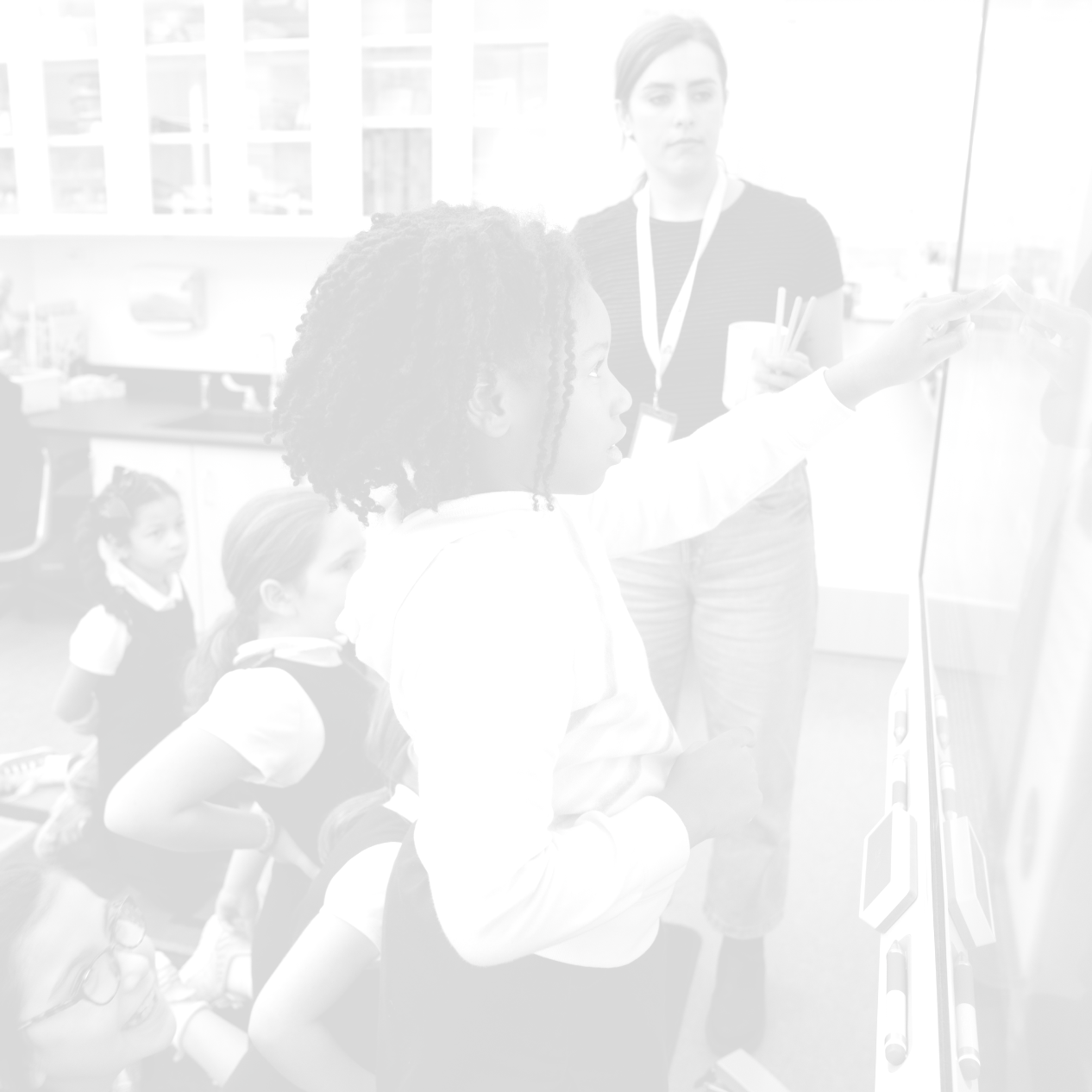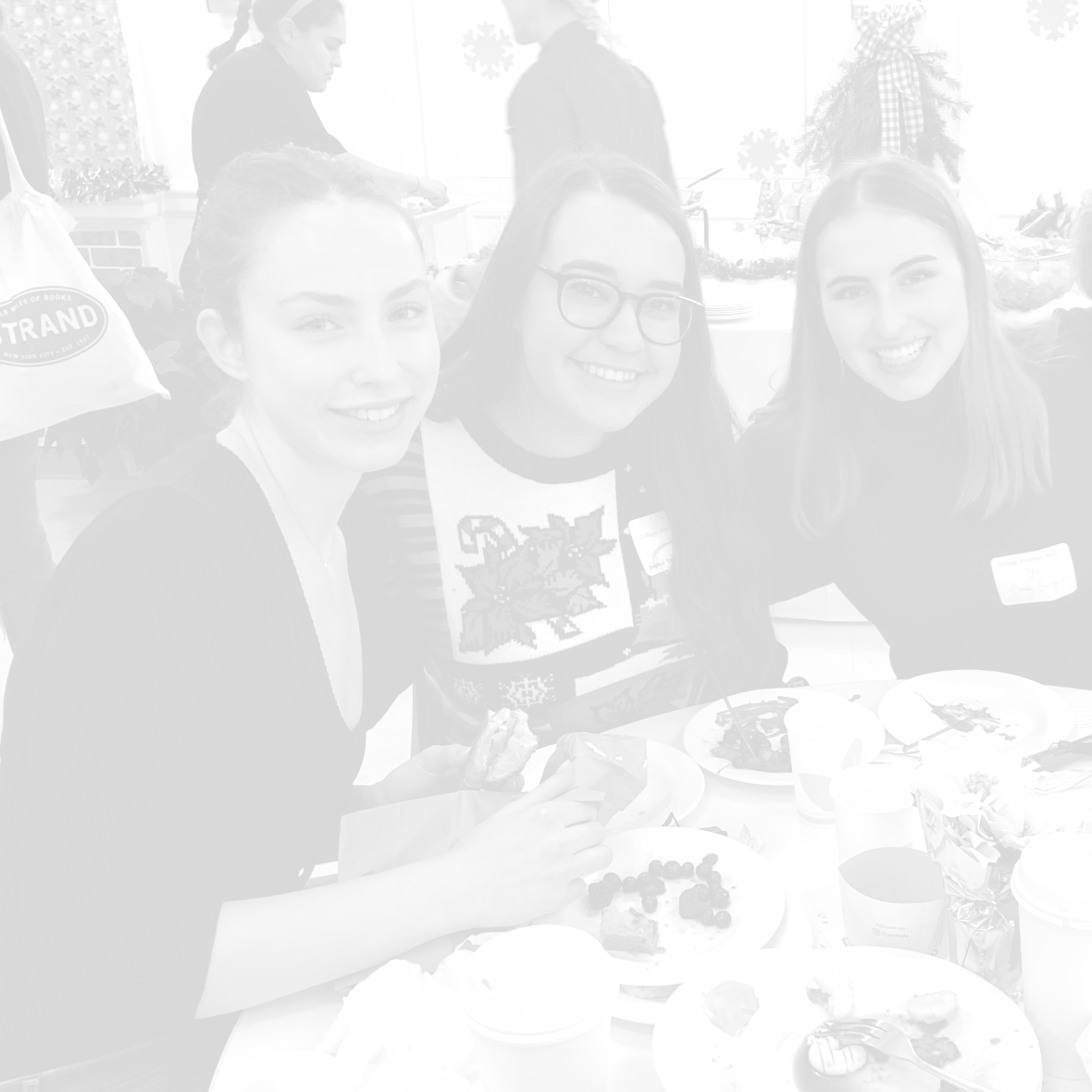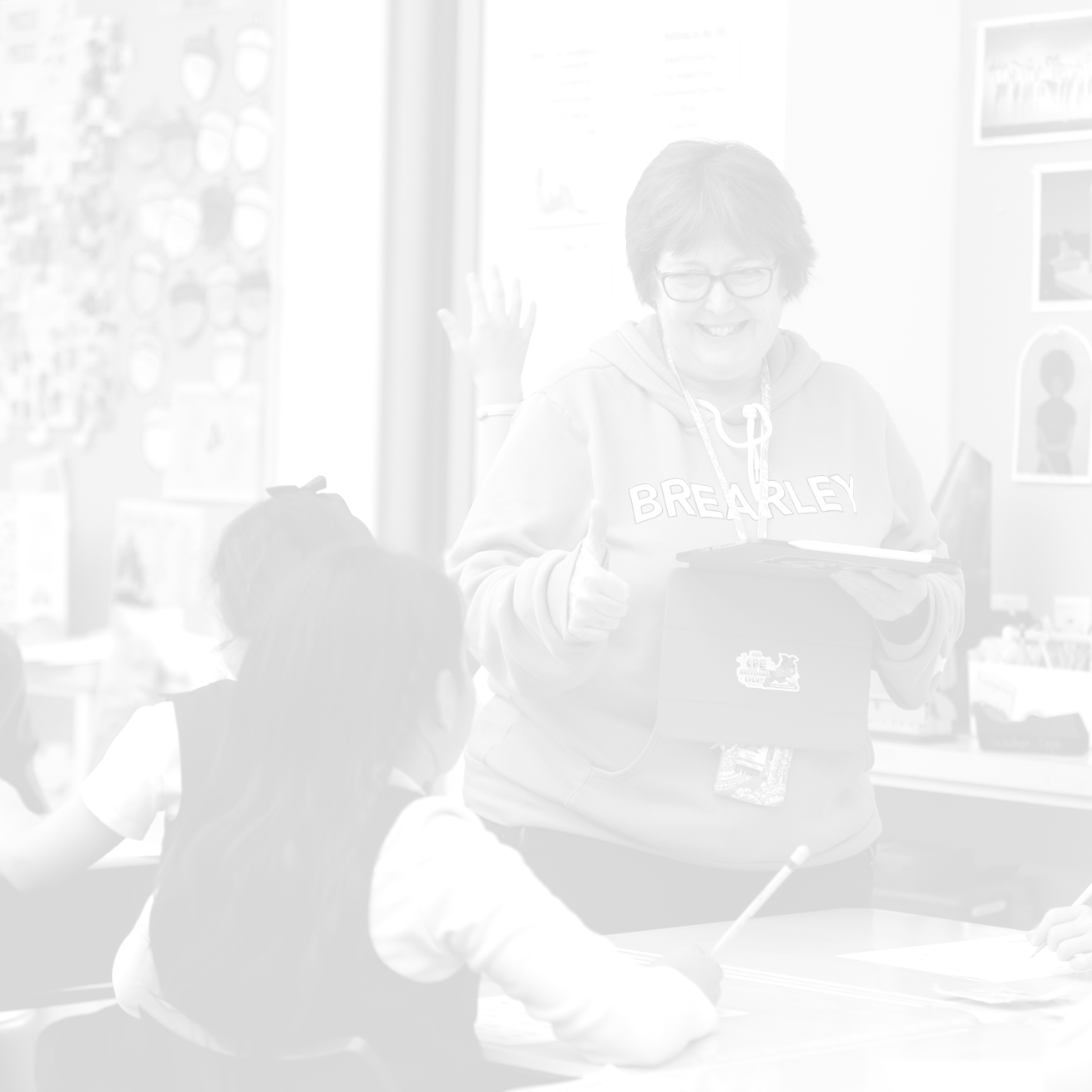Senior Spring
Every April, Class XII steps into senior projects, or what is commonly known as Senior Spring. Students create their own programs, which can include special minicourses, internships inside or outside school, or a combination of the two. Senior Spring, which runs through June, teaches lessons about time management and organization and gives students the opportunity to pursue their particular interests in an abbreviated gap term as the transition to college draws near.
Below several now-alumnae describe how they spent their Senior Spring.
Isabel Chess
For my Senior Spring, I tried to find balance between exploring my interests in new ways and continuing my commitments at Brearley. The centerpiece of my project is an internship with Dr. Marx, an orthopedic surgeon at the Hospital for Special Surgery (and a Brearley dad). However, I have other, smaller, pieces that fill my days. I am taking two minicourses (economics and architecture) and continuing my BC calculus class, peer-leading my ninth graders and running on the varsity track and field team.
As I was thinking about what I wanted to do, my thoughts kept coming back to my strong interest in medicine. My interest started very young; biomedical science is the “family business” of sorts. In my sixth-grade science class, I became fascinated by human physiology. In my advanced biology class this year, my favorite parts have been those in which we learned about and discussed diseases and the human body. Senior Spring seemed like the perfect opportunity to explore this interest before starting pre-medical classes in college.
Lola Hagen
Lights up on the Brearley stage. Enter: me, playing the ukulele. This was the first scene of my ninth-grade class drama, Snow Angel, for which my classmates and I wrote original music under the direction of Mr. Baldwin. When I look back, I see the show symbolizes the passion I hold so fiercely now for music, theater and musical theater. It’s why I’m writing a musical for my senior project.
I can confidently say that Snow Angel sparked my first desire to create my own piece of musical theater—and after holding that desire for a few years, I started to work on an actual musical at Acting Manitou (a summer camp for theater frequented by many members of the B-Deck community). There I developed my story, which is centered around a teenager who one day, while attending his New York high school, gets caught in an earthquake and wakes up in a magical forest, having to then find a way home with the help of friends along the way. After coming up with this small idea, I knew going into senior fall that I could use my Senior Spring to bring it into existence—but I wasn’t sure if writing an actual musical would ever be in my ability. I’m still not sure, but it’s a leap of faith—and so far, I haven’t hit the bottom.
Writing a musical is my main project of the spring, but it is one of many pieces in my Senior Spring program. Most of these pieces involve theater—I am in Mr. Duke’s acting and dramatic literature class as well as his playwriting minicourse, and I am acting in the spring MainStage, Twelfth Night. I find that every skill I develop as an actor, reader, techie, musician and playwright is vital for when I sit down to work on my musical.
My daily routine starts by waking up after the sun has risen—which is quite the shift from my routine of the last nine years. I arrive at school between 9:00 and 10:00 am, usually for a drama class or a meeting with my project advisor, Mr. Baldwin, and then I am faced with the struggle of where to sit down to work until rehearsal. Most days I have no choice but to conduct a thorough investigation of every room in the school that has either a piano or some sort of quiet—considering that the senior homeroom has long lost its studious atmosphere. I usually end up in the green room on B-Deck, only to be kicked out by the ninth- or tenth-grade band after ten minutes of work. Rest assured—I get a lot of work done on weekends.
As I have been working on my musical, I have been made increasingly more aware of how much my art and I are influenced by my time at Brearley. My Middle School years were spent singing in chorus and playing cello and guitar after school, and for the past four years I have been thoroughly immersed in drama. My Brearley education has taught me how to engage with myself creatively in a unique way, and without it I could never have challenged myself in this way during my senior year of high school. I hope that I never lose that Brearley fearlessness.
Hafsa Hossain
Assistant teaching for an eighth-grade history class helps me observe the ways in which teaching is a form of mentorship. As I sit in on classes, I observe an exchange of ideas and opinions so that both the teacher and the student have a more complete, nuanced understanding of a topic. Mr. Sanchez fosters an academic environment that invites “tangents” to emerge so that students can use the material to analyze the world around them. He creates an emphasis on the relevance of history in one’s relationship to the world. In planning for Senior Spring, I also wanted to understand how my interest in history and my passion for equity and inclusion could inform each other. A Brearley classroom is often characterized as rigorous but I strongly believe that it should be inclusive as well. The classroom serves as a unique space in which biased narratives can be corrected by weaving in perspectives of diverse groups. Working with a teacher of color, Mr. Sanchez, gave me the unique opportunity to understand how to introduce perspectives of underrepresented groups and instill an awareness in students so that they can recognize both the presence and absence of those perspectives.
In observing how each class is planned, I learned that a 40-minute class is a building block in which each element is deliberate—the choice of a primary source, the sequence of the lesson, the questions asked to the class—so that the students understand both the specifics and the larger ideas. I was aware of all these elements as I planned the first lesson I co-taught. The lesson centered around imperialism and all its factors and products. I not only had to analyze the ways in which Western imperialism and colonialism has shaped the narrative of global history, but I also had to create a clear lesson plan that was conducive to a variety of learners. As I worked on my lesson plan, I found myself drawing inspiration and guidance from my own experience in eighth-grade history. Being an assistant teacher has brought me full circle at Brearley; I am able to offer my personal perspective in the learning of history that I was once learning.
Elaine Kharbanda
Moonrock 350s. Satin Shattered Backboards. Bred Toes. I am a sneakerhead.
I am also a young woman who is making a difference in a male-dominated community. Early on, in Lower and Middle School, I sought to express myself while navigating Brearley’s uniform guidelines. So, I turned to my sneakers. Little did I know this creative outlet would become a passion and a business, transforming my life in the process. Since Upper School, I have been a sneaker and streetwear collector, entrepreneur and reseller. From my first “grail”—the limited-edition Adidas Yeezy Moonrock 350—to attending Sneakercon events throughout the country, I am known among my friends and their friends as the sneaker/streetwear go-to person.
Senior Spring gives me the freedom and time to devote to all of my sneaker and streetwear projects. I plan to stay involved in the industries during and after college, so by starting to arrange my own schedule now I can test out what I like and don’t like.
Jasmyne Roberts
I have been interested in STEM since elementary school. Whether it is making different bubble solutions to see which works the best, spending my summers in coding courses, building IKEA furniture or just being enthusiastic about a new math assignment sheet, I find STEM has played a significant role in my life as a young adult. Thus, in junior year, when I began to think about ways to give back to my local community, one of my ideas was to start a computer science program for second-grade girls. Coding is a profession of the future, and education in the field is important for critical thinking and problem solving, but children in my neighborhood of downtown Brooklyn often aren’t exposed to technology because of limited school resources. In addition, having been at Brearley since seventh grade, I knew that fostering a sisterhood would give the students a chance to have more female role models, a less antagonistic learning environment, and a safe space to develop and grow. My target of second-graders stemmed from my love of working with children just old enough to stay seated and grasp more complex ideas, but young enough to express their wild imaginations freely.
As a first step, I created a GoFundMe page to raise money for ten Chromebook laptops. All year long, I spent time researching about lesson plans and working with a local community center about starting this program. Due to my busy junior- and senior-year schedule, I found myself unable to put in the appropriate amount of time needed to make this program the best it could be. Therefore, when Ms. Clark and Ms. Heinz started talking to our class about Senior Spring, I knew I had my chance to follow through with this idea. Each week, I have been meeting with Ms. Blumberg, my Brearley project advisor, to discuss the lesson plan and agenda of the program for the week. The coding program itself lasts an hour each Wednesday after school from 4:00 to 5:30 pm. During my first class, I used slips of paper—some printed with green arrows and others with red stop signs—to teach the students about basic computer commands. One girl, chosen as the programmer, placed the paper in an arrangement on the floor, and another girl, a robot, was tasked to follow those exact instructions by moving about the room. If the arrows and stop signs were placed accurately and in the right order, the robot could successfully navigate around a chair or walk in a zigzag. One misplaced slip of paper would lead the robot astray. In the following weeks, I will introduce the laptops and teach students the first steps of programming by using a kid-friendly application called Scratch.
My Senior Spring isn’t purely academic; aside from leading this program, I have been taking minicourses in guitar, calligraphy and ceramics. I’ve continued as co-head of Science Club and as a member of my swim team, and I volunteer at a temple in Queens. I also enrolled in a kung fu class and have begun compiling an oral history of my family’s immigration experience to the United States.
This opportunity has allowed me to pursue a wide variety of interests at a flexible, steady pace while maintaining ongoing commitments. It’s been a great way to conclude my time at Brearley.
Lauren Scheller
Our family friend Dr. Alex Gometz recently started Prehab, a company that works with all people to help them accomplish their goals and avoid getting injuries. He offered me the chance to intern at Prehab, and when it came time to plan our projects for Senior Spring I realized it was an opportunity I could not pass up. As a dedicated runner on the varsity track and field and cross-country teams, I recognized that Prehab would teach me valuable lessons about the sports I do at Brearley. On just my first day shadowing the experienced athletic trainers and physical therapists at Prehab, I learned a variety of stretches and common injuries for runners. I appreciate not only the tools Prehab has given me to keep my body healthy, but also the experience to see firsthand how this small business operates. In college, I plan to study business through the lens of hospitality.
By interviewing Dr. Gometz, I gained an understanding of the challenges he has faced starting his own business and building a client base. Additionally, I have been able to observe how Prehab’s specialists interact with their customers as they provide a unique form of hospitality.
